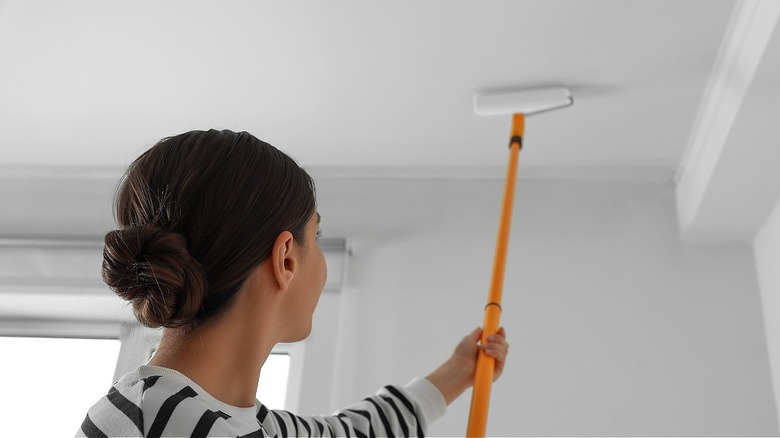Don't Make This Primer Mistake When Repainting Your Ceiling
Painting ceilings is a fairly difficult task to do due to arm fatigue, back bending, and neck craning, so you want to do a good job the first time around. This prevents you from being forced to add extra coats to hide mistakes, or even worse, redo the entire project. But there's one mistake in particular you want to avoid when painting your ceiling, and that's using the wrong primer. Some people don't think primer is even necessary and skip it entirely, which makes things challenging in the long run. But if you decide to spend the extra money to make your project more seamless, you want to go the extra mile and buy the correct kind of primer from the start.
Specifically, you want to double-check and make sure whether you're supposed to use a water-based or oil-based primer for your painting project. Using the wrong one will force you to put on multiple coats of primer and then multiple coats of paint on your ceiling, only to discover old stains and texture are still peeking through. It's an amateur mistake that can ruin your paint job.
Water-based vs. oil-based primer
Water-based primer is best for painting brand-new drywall or new projects. It sets the foundation for the fresh paint and will help the color pop. It basically "primes" the new drywall, giving you a clean, smooth surface to apply your paint, ensuring it goes on smoothly and without any imperfections. You can also use any kind of paint on top of it.
However, if you're working with old drywall that has stains, texture, or was recently altered (like removing a popcorn texture,) then you're better off using oil-based primer. It helps cover these difficult blemishes much better, allowing you to use less paint in the long run. For example, if you have a dingy water stain on the ceiling after fixing a leaky pipe, a water-based primer won't be able to adequately cover that. You'll need the oil version. You can then use an oil- or latex-based paint on top, but not a water-based one.
However, there are some caveats to keep in mind when using an oil-based primer. It has a more potent odor than its water-based counterpart, which means you'll need to take special care to ventilate the room properly, whether that's by opening windows, running exhaust fans, or running floor fans. It also dries at a slower rate, so you'll need to give it at least 24 hours to dry on the ceiling before adding your first coat of paint. That means you need to plan your painting job accordingly.
